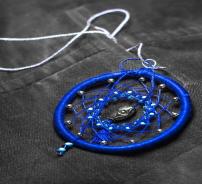Roman Coin Depicting Caligula
The International press is full of the news about the supposed discovery of the tomb of the Roman Emperor Caligula near Lake Nemi, some thirty kilometers from Rome. Caligula was one of history’s most notorious monsters. Cruel, vicious, and almost certainly insane, his exploits, according to the Roman historian Suetonius, included murdering his grandmother and brother, committing incest with all three of his sisters, proclaiming himself a god and demanding to be worshipped as such, and making his favorite horse a member of the Roman senate. Born Gaius Julius Caesar Augustus Germanicus in 12 A.D., he was given the name Caligula (“little boots” while with his father Germanicus during his campaigns in Germany. He was murdered by a conspiracy involving the Praetorian Guard, the Senate and the Court in 41 A.D.
Italian police, acting on a tip , arrested a man who was trying to smuggle abroad a statue of the emperor that was recovered from the site. The marble statue was depicted wearing a god’s robes and “caligae,” the sandal-boots for which Caligula was named. The discovery of the statue led the police to the tomb.
Not so fast, says Mary Beard, a professor of Classics at Cambridge University and a historian well-known for debunking myths about antiquity. “All the evidence we have from the ancient world suggests that this cannot be so,” she says. “There is no suggestion whatsoever, so far as I know, that this burial was at Nemi, or that it was a grand tomb. True, Caligula had a big villa there, but it is almost inconceivable that this assassinated symbol of imperial monstrosity would have been given a grand monument, plus a big statue there. Besides there is no evidence for that whatsoever.”
Excavations of the tomb have begun and it will be fascinating to see what turns up.
